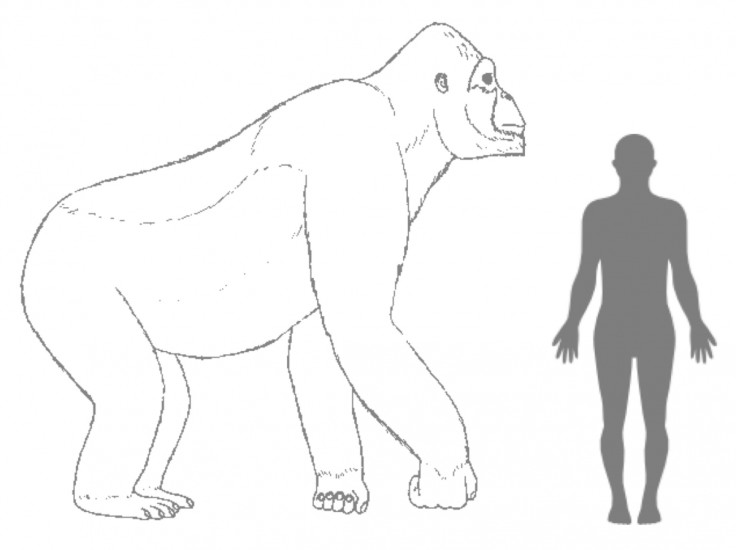King Kong: It was inflexibility, not Beauty, that killed off Gigantopithecus

A giant species of ape that lived up until 100,000 years ago went extinct because it could not adapt to dietary and habitat changes, scientists have suggested. Gigantopithecus were the largest-known apes ever to walk the Earth, but very little is known about them as there is little fossil evidence to go on.
The first species of Gigantopithecus was described in 1935 and since then fossils have been found in China, India and Vietnam. Different species of Gigantopithecus existed up to nine million years ago and would have co-existed with early humans for tens of thousands of years.
The largest species of the genus, Gigantopithecus blacki, stood at up to 10ft (3m) in height and weighed more than 540kg. In their study, scientists from Senckenberg Centre for Human Evolution and Palaeoenvironment in Tübingen and the Senckenberg Research Institute in Frankfurt looked at what could have caused the giant ape to become extinct.

Previously, the diet of Giantopithecus has been subject to much debate. Some say they were meat-eaters, while others say they were vegetarians. A third group has also suggested they lived on bamboo alone.
Published in the journal Quaternary International, the authors looked at the giant ape's tooth enamel to try to work out what pushed them to extinction. They examined the teeth of specimens from China and Thailand, looking at the stable carbon isotopes to look at its dietary habits over several million years.
Analysis showed they were restricted to forested habitats, even though there were open savannahs nearby, and that they had a vegetarian diet. Study author Hervé Bocherens explained: "Our results indicate that the large primates only lived in the forest and obtained their food from this habitat. Gigantopithecus was an exclusive vegetarian, but it did not specialize on bamboo."

The team said these restrictions in diet and habitat eventually doomed the giant apes, as the shifting climate severely limited their diets: "Even when open savannah environments were present in the landscape, Gigantopithecus foraging was limited to forested habitats," they concluded. "The very large size of Gigantopithecus, combined with a relatively restricted dietary niche, may explain its demise during the drastic forest reduction that characterised the glacial periods in South East Asia."
Bocherens added: "Relatives of the giant ape, such as the recent orangutan, have been able to survive despite their specialisation on a certain habitat. However, orangutans have a slow metabolism and are able to survive on limited food. Due to its size, Gigantopithecus presumably depended on a large amount of food. When during the Pleistocene era more and more forested areas turned into savanna landscapes, there was simply an insufficient food supply for the giant ape."
© Copyright IBTimes 2025. All rights reserved.






















